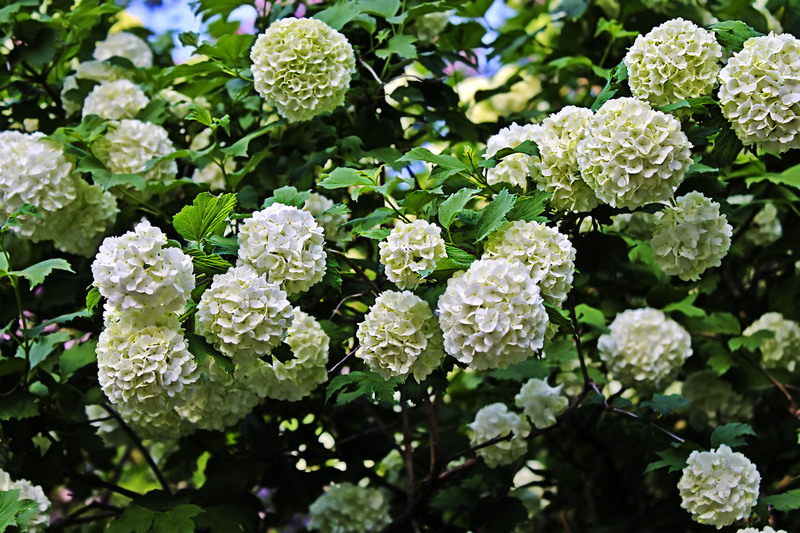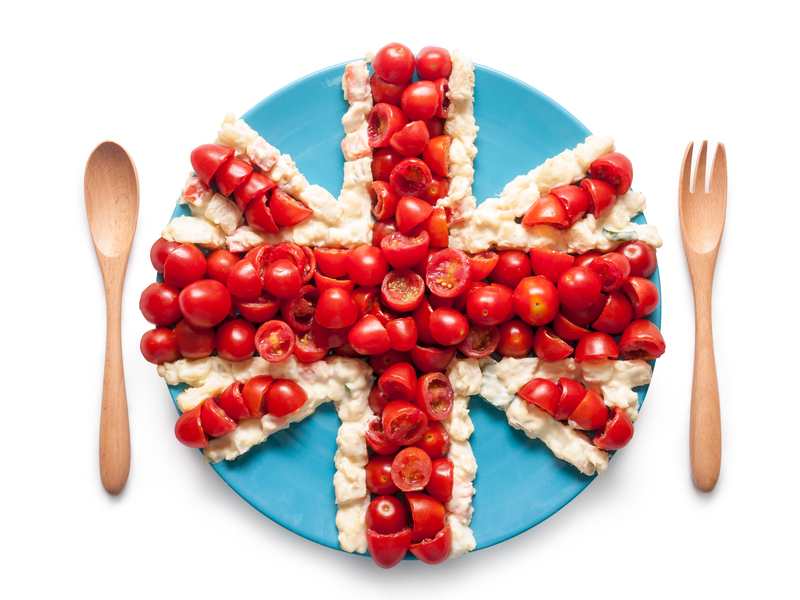Transforming Gardens into Dog-Friendly Environments
Posted on 03/10/2025
Transforming Gardens into Dog-Friendly Environments: A Comprehensive Guide
If you're a devoted dog owner and a garden enthusiast, you know the challenge -- how to create a beautiful, flourishing outdoor space that's safe and enjoyable for your furry friend. Transforming your garden into a dog-friendly environment doesn't mean sacrificing beauty or cutting corners. With the right planning and smart design choices, you can have a fabulous garden and a happy pooch!

Why Design a Dog-Friendly Garden?
For many, pets aren't just animals - they're family. Our canine companions love being outside, exploring, running, and lounging in the sunshine. However, traditional gardens can pose hazards to dogs or quickly fall victim to their playful antics. Dog-friendly landscaping bridges the gap, offering an inviting atmosphere while addressing safety and behavioral issues. In this article, we'll cover everything you need to know about transforming gardens for dogs:
- Safe, non-toxic planting
- Secure boundaries and fencing
- Paths and play zones
- Digging areas and scent zones
- Shade and shelter
- Water features
- Enrichment and interactive spaces
- Practical maintenance tips
Safe and Non-Toxic Planting
Understanding Toxicity in Common Garden Plants
Before selecting plants, it's crucial to know which species pose risks to dogs. Many popular garden plants, such as lilies, foxgloves, oleander, azaleas, and daffodils, are toxic to dogs if ingested. For a truly dog-safe garden, avoid these plants:
- Sago palm
- Yew
- Wisteria
- Rhododendron
- Ivy
Instead, opt for non-toxic, hardy plants such as:
- Sunflowers
- Marigolds
- Snapdragons
- Roses
- Camellias
- Magnolias
Choosing Durable, Dog-Proof Flora
Dogs are explorers, and their paws (and teeth) can be tough on delicate foliage. Select robust plants that can withstand some canine curiosity and activity. Good options include:
- Lavender (also helps repel fleas!)
- Rosemary
- Boxwood
- Ornamental grasses
Avoid using cocoa mulch, as it contains theobromine, which is toxic to dogs. Consider bark chips, pebbles, or synthetic grass for pathways and borders instead.
Installing Secure Boundaries and Fencing
Choosing the Right Fence
A critical aspect of creating dog-friendly gardens is ensuring safe containment. Choose fencing that's high enough (at least 4-6 feet, depending on your dog's size and agility) and sturdy enough to resist chewing or digging.
- Wooden panels: Provide privacy and durability
- Metal or chain-link: Robust and long-lasting
- Hedge or living fences: Combine safety with natural beauty
For smaller dogs, make sure there are no gaps beneath or between fence panels. For eager diggers, reinforce the base of the fence by burying it several inches underground or installing a dog-proof barrier.
Gates and Access Points
All gates should latch securely and be out of paw's reach. Consider self-closing hinges or locks if you have escape-artist dogs, and never leave access open to the street.
Designing Canine Paths and Play Zones
The Joy of the Garden Circuit
Dogs love routine, and many naturally patrol their territory. Plan for this by including a designated pathway or "dog run" around garden borders:
- Use mulch, gravel, or paving slabs for durability
- Ensure paths are wide enough for your dog's breed
- Smooth out any sharp edges or hazards
Pathways also help minimize damage to planting beds and keep muddy paws at bay.
Play Spaces and Exercise Pods
Active dogs benefit from designated play areas equipped with toys, obstacles, or even small agility courses. You might include:
- Sandpits for digging
- Logs, ramps, or low hurdles
- Interactive toys like tug ropes or balls
- Open grassy lawns for fetch
Position these elements away from flower beds and delicate plants to minimize canine-caused destruction.
Accommodating Digging and Scent Zones
Digging is a natural dog behavior, often driven by curiosity, boredom, or the need to cool off. Rather than fighting this instinct, provide a dedicated digging patch.
Building a Dig Pit
- Choose a shady corner of your garden
- Use loose, safe soil or sand
- Bury toys or treats to encourage use
- Praise your dog for using the area
This helps save your prized flower beds and keeps your dog engaged in appropriate places.
Scent Gardens for Canine Enrichment
Stimulate your dog's powerful nose by planting aromatic herbs like mint, sage, thyme, and basil. These not only add flavor and fragrance to your garden, but also provide olfactory enrichment your dog will love.
Providing Shade and Shelter
On hot days, dogs need cool, shaded spaces to rest. Integrate shade elements into your garden for pet comfort:
- Trees with wide canopies (e.g., maple, oak)
- Shade sails or pergolas
- Dog houses or open shelters
For extra comfort, include waterproof, washable outdoor beds or blankets in shaded zones. On rainy days, make sure there's a sheltered retreat available.
Temperature-Safe Surfaces
In summer, artificial grass, patios, and even pebbles can become dangerously hot. Test surfaces with your hand and choose materials that stay cool underfoot. Place water bowls in several convenient locations so your dog always has access to fresh water.
Water Features in Dog-Friendly Gardens
Fun and Safety First
Whether your canine companion loves to splash or simply needs a drink, water features can make a huge difference. Consider:
- Dog pools -- sturdy plastic or splash pools for cooling off
- Water fountains -- offer a continuous source of drinking water
- Ponds -- only if designed for safety (gentle slopes, shallow edges, no toxic plants nearby)
Never use chemical treatments in dog-accessible water, and avoid fast-flowing or deep bodies that pose drowning risks. Always supervise your furry friend around larger water elements.
Enrichment and Interactive Spaces
A truly pet-friendly backyard is one that nourishes your dog's mind and body. As you transform your garden into a canine paradise, add elements that stimulate curiosity and play:
- Install tunnels, obstacles, or dog-safe climbing features
- Rotate outdoor toys to prevent boredom
- Include treat-dispensing toys or puzzle feeders
- Set up "snuffle mats" hidden among the plants
- Hang ropes or rubber toys from tree branches for interactive play
Engaged dogs are happier, healthier, and far less likely to dig up lawns or chew on your prized roses!
Practical Maintenance Tips for Dog-Friendly Outdoor Spaces
Cleaning and Hygiene
Regular cleaning keeps your garden sanitary for both dogs and humans. Remove waste promptly, hose down urine spots, and use dog-safe disinfectants where needed. For odor control, sprinkle a little baking soda in problem areas, or plant fragrant herbs as natural air fresheners.
Lawn Repair and Protection
- Choose resilient grass varieties such as rye, fescue, or Bermuda
- Water and feed lawns well to protect against burn marks
- Place stepping stones in high-traffic zones to protect turf
If your dog loves to dig, reinforce lawn edges with durable borders or consider artificial pet-friendly turf for low-maintenance solutions.
Pest Control
Avoid using chemical pesticides, herbicides, or fertilizers, as these can harm pets. Opt for organic and natural pest control methods instead:
- Neem oil sprays for aphids and mites
- Diatomaceous earth for slugs and crawling insects
- Beneficial insects (ladybugs, nematodes)
Always check that any products you use are pet-safe.
Beautiful Yet Practical: Garden Ideas for Dogs and Owners
Combining Aesthetics with Function
The good news? Dog-friendly gardens can be stunning. Use raised beds, robust planters, and vertical gardens to add layers and protect delicate specimens. Mix textured foliage, strong colors, and fragrant plants for sensory delight -- for you and your canine companion.
- Install low hedges as barriers around vegetable patches
- Decorate with dog-safe potted plants in hard-to-reach places
- Create "no-dog zones" with trellises, rocks, or temporary fencing
A balance between beauty and practicality ensures you both enjoy the space to its fullest potential.

Common Mistakes to Avoid When Creating a Dog-Safe Garden
- Ignoring toxic plants and materials
- Overlooking gaps in fences or gates
- Neglecting shade and water needs
- Forgetting about play and enrichment zones
- Using chemical treatments without checking safety
Careful planning can help mitigate these risks, resulting in a secure, stimulating environment for your pet.
Conclusion: The Joy of Dog-Friendly Gardening
Transforming your garden into a dog-friendly environment is a rewarding project. When you design with your dog in mind, you foster a secure, welcoming space that's as enjoyable for your pet as it is for you. From dog-proof plant selections and secure fencing to cool shade, fresh water, and mental stimulation, every detail matters.
With a little creativity and thoughtful planning, your garden will soon blossom into a true canine haven--one where you and your best friend can make lasting memories all year round.
FAQs: Dog-Friendly gardens
- Q: What plants are safe for dogs?
Safe options include roses, marigolds, lavender, snapdragons, and many herbs. Always check specific plant toxicity before introducing new species. - Q: Can I have a vegetable patch with dogs?
Yes--use fencing or raised beds to protect crops, and avoid toxic species (like onions or garlic) accessible to pets. - Q: How can I stop my dog from digging everywhere?
Offer a designated digging pit, keep them mentally stimulated, and reinforce boundaries to minimize unwanted excavations. - Q: What grass is best for active dogs?
Choose hard-wearing varieties like ryegrass, Bermuda, or buffalo grass for durable lawns. - Q: Are there quick fixes for urine burn spots?
Water the area after your dog urinates, reseed or patch as needed, and feed the lawn regularly to improve resilience.
Embrace the benefits of dog-friendly landscapes and enjoy a thriving, secure garden that brings out the best in both you and your canine companion!

